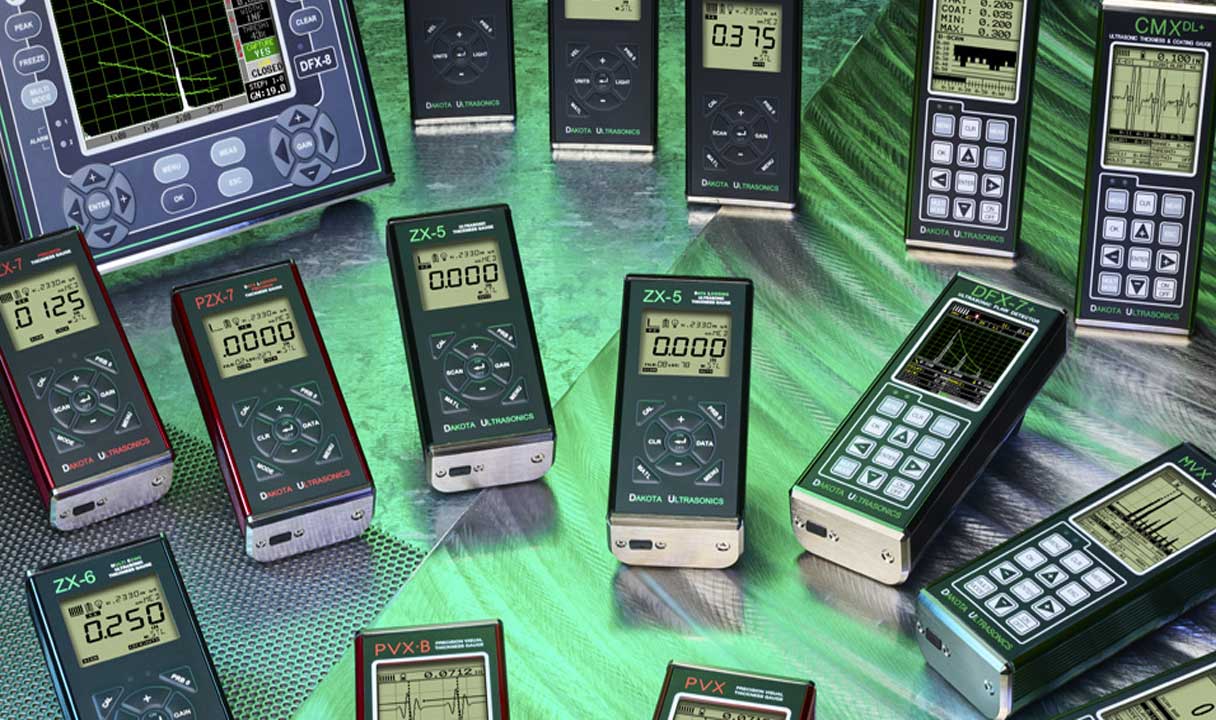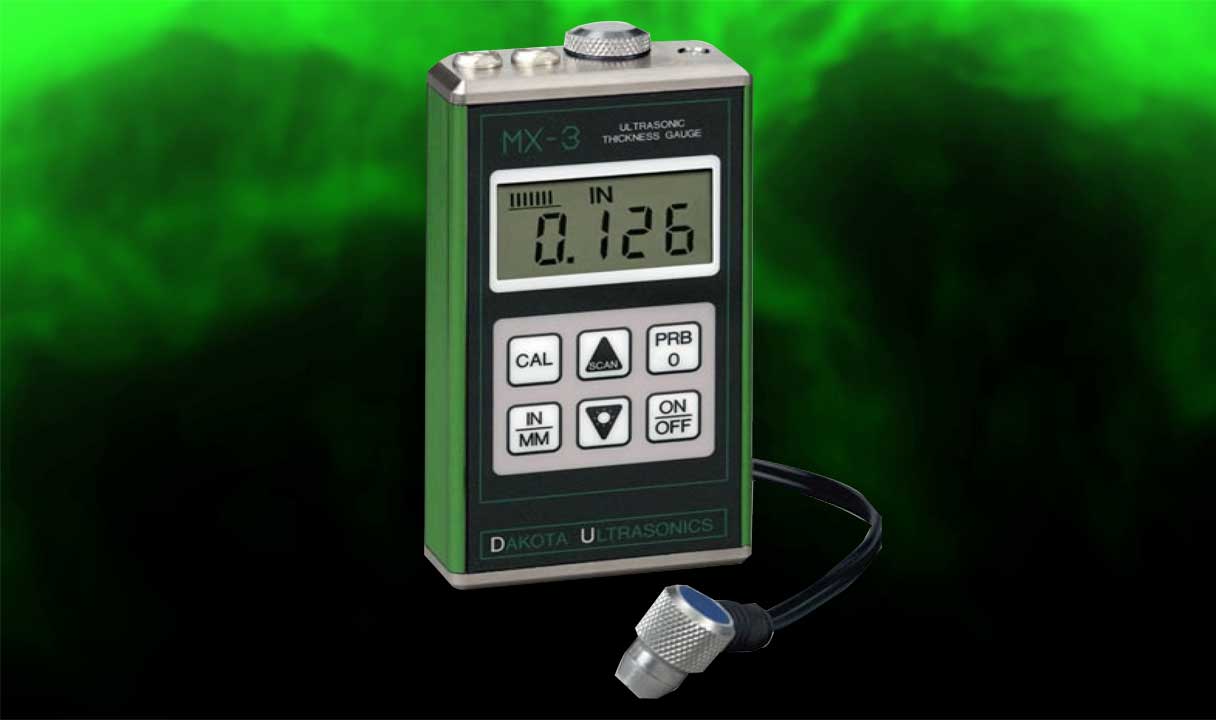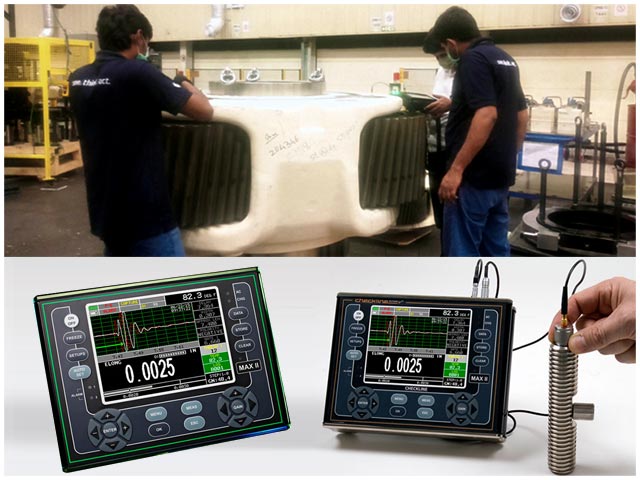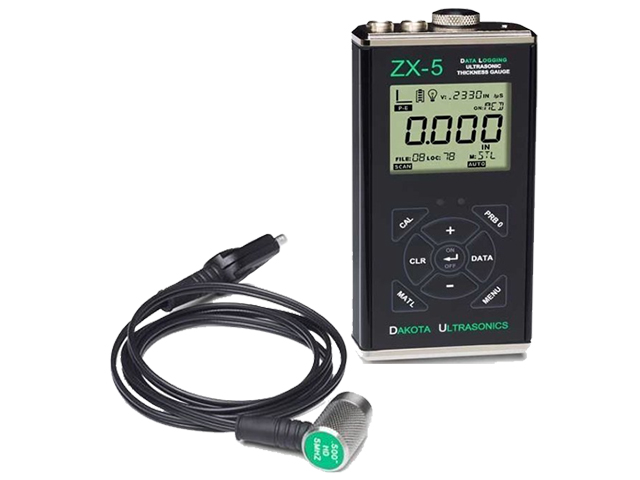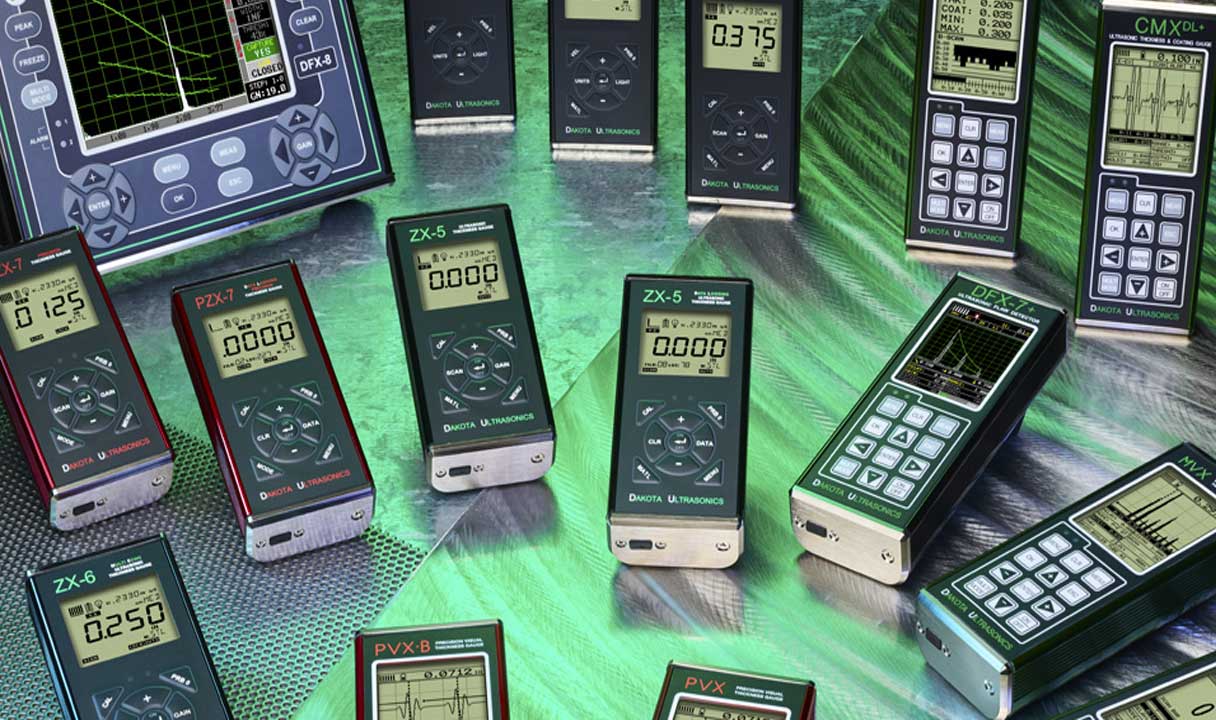
Thickness gauges are utilized where a micrometer or vernier caliper cannot be utilized – for measuring thickness of large sheets of metal or other substrates which can otherwise not be measured using the above devices.
A thickness gauge works on the principle of ultrasonics, i.e a signal is sent into the substrate through the transmitter of an ultrasonic transducer which when received allows the thickness of the substrate to be measured.
While all this sounds so simple, should all ultrasonic thickness gauges not be the same?
Which leads to the questions –
1. what is the type of substrate under test ? egg, steel, aluminum, iron, titanium, glass etc.
2. What are the conditions in which the thickness gauge will be used, will there be dust, oil, water ?
3. Is it a simple sheet of material or a final product ?
4. How thin or thick is the product or material ?
5. Is it a tube , sheet or a block ?
6. Are measurements required to be conducted on the same type of material each time or do the materials which are being tested keep on changing ?
7. Does the material have a coating or not ?
8. What is the accuracy required ?
9. Is datalogging required ?
amongst others.
Knowing the answers to the above decides :
What we need from an ultrasonic thickness gauge in terms of capability.
What is the kind of ultrasonic transducer required to efficiently carry out the measurements and with accuracy.
Thickness gauges are available in options ranging from general purpose thickness gauges to precision thickness gauges with accuracy of 0.001mm. also, apart from general purpose thickness gauges, options are available of multimodal thickness gauge which go beyond the standard pulse echo mode introducing the echo – echo mode for measuring through coating. The options go forward to include thickness gauges that also measure coatings apart from just the material thickness.
Top end professional units are A/B Scopes which perform the function of not just providing thickness but also the capability to view cross section .professional units also include pre fed velocities or the option to set custom velocities to allow the user to work unhindered without the need to repeatedly calibrate to the material.


